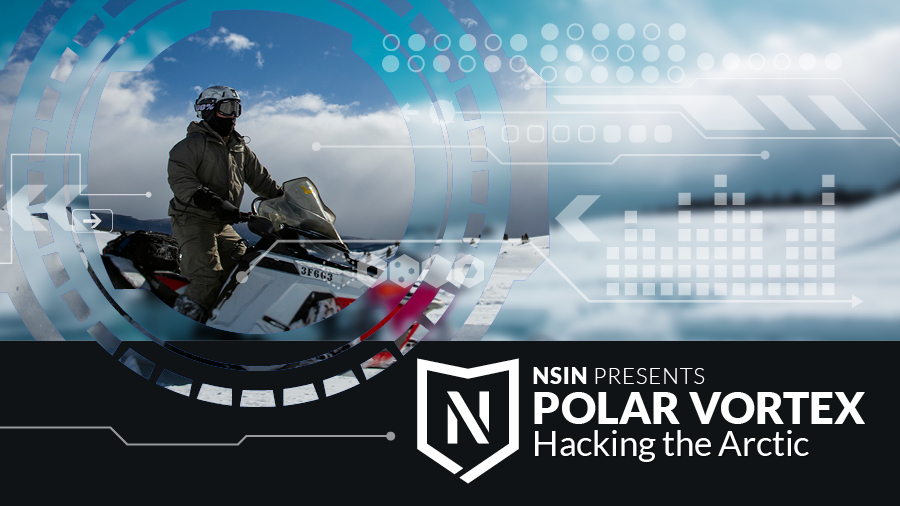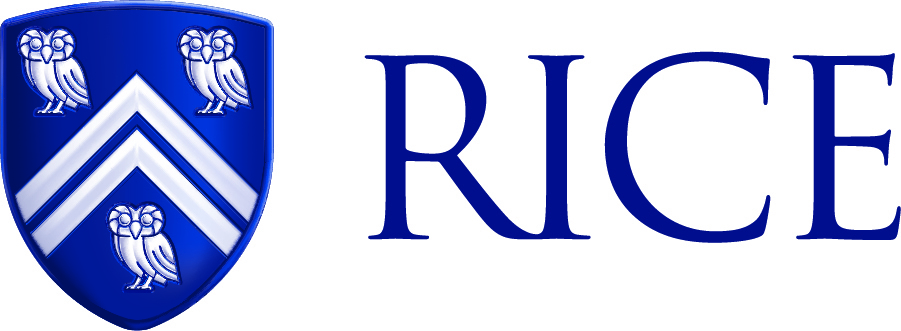
Finalists and VIP Judges Announced for the NSIN Hacks Polar Vortex: Hacking the Arctic

The National Security Innovation Network (NSIN) announced the eight final teams and VIP judges for the Polar Vortex: Hacking the Arctic pitch competition being held this Thursday, Aug. 5 on Zoom.
Finalist teams were selected from across the country based on the quality of their solution based on one of three focus areas for geospatial data collection in the Arctic: cybersecurity, geospatial intelligence access in remote areas, and user experience through machine learning and artificial intelligence (AI) to make sensor data useful and actionable.
The Polar Vortex hackathon kicked off in July with over 340 innovators who formed teams to develop solution concepts. Throughout the competition, teams met with experts from the military and defense industry who provided mentorship to guide their understanding of how to turn ideas into viable ventures that will solve Department of Defense (DoD) mission sets. They also met one-on-one with experts to prepare and refine their pitches for the judges.
FINALISTS
An overview of the eight final teams is available on the NSIN UNUM platform.
- Aural Borealis- A solution designed with three components (back end, middleware, and front end) to address geospatial data fusion, the transmission of updates to the field, and edge device decision support analytics: Aural-Strata, Aural-Mesh, Aural-Trek.
- FreeSpaceOptics Mesh Network - This solution takes proven combat-tested Navy technology in the form of MeshNet Relays to build a strong, rapidly deployed Mesh Network that can push and pull voice, data, and video in an austere arctic environment with a significant pipeline for geospatial intelligence.
- GEE ISD - As global warming accelerates the melting of sea ice and glaciers, tracking of multiple icebergs and ships becomes essential for military operations in the Arctic. Team GEE ISD proposes the development of an iceberg and ship database based on various satellite images from the Google Earth Engine (GEE).
- Infralytiks- This solution includes data fusion and processing from multiple data sources, including satellite, drones, and tablet/phone, on a mobile/tablet application that can import and process data on edge from these sources and provide actionable data and insights for the user.
- Parasanti- This team of veterans, data scientists, and farmers propose an edge processing solution fusing hardware and software to deploy AI/ML algorithms in containers to the edge.
- Polaris Communications Module - The Polaris Communications Module is a small, portable laser comms system to integrate into any field system requiring comms, including human-crewed and uncrewed vehicles, observation stations, and personnel-carried devices.
- Polar Clarity- An immersive weather visualization for DoD logistical superiority in the Alaskan Arctic.
- Wrexx Distributed Mesh- The proposed mesh network combines technologies that the DoD and civilian researchers already possess or can acquire affordably, improved equipment redesigned for the arctic environment, and new AI training methods for lightweight edge processing.
JUDGES
- Rear Adm. Steve Waddell is a native of Temagami, Northern Ontario, Canada and joined the Royal Canadian Navy in 1990. He assumed duties as Vice-Commander, U.S. Second Fleet in August 2019. He is a 2014 graduate of the United States Naval War College (Naval Command College), having earned a Diploma in National Security and Strategic Studies. He is also a graduate of the Combined Force Maritime Component Commander Course.
- Mr. Phil Chudoba serves as the associate director for Capabilities, NGA. In this capacity, Chudoba is responsible for defining the strategic direction of the agency and implementing that strategy. Chudoba provides oversight, synchronization, guidance, and development of NGA, National System for Geospatial Intelligence, and Allied System for Geospatial Intelligence strategic direction, future resource programming, capabilities planning, and oversees acquisition, innovation, research, and the adoption of new technologies supporting GEOINT requirements.
- Mr. Mark Munsell is the deputy director of the data and digital Innovation directorate at National Geospatial-Intelligence Agency (NGA). Munsell was the former chief technology officer at NGA and the deputy director of the chief information officer– IT services directorate. Munsell is the recipient of the Presidential Rank Award and NGA’s Distinguished Civilian Medal.
- Mr. Chris Ashabrannar is the deputy program director, Next NGA West (N2W), for Technology and Readiness. Ashabrannar is responsible for overseeing the overall IT planning and execution for N2W, as well as theintegrated master schedule and risk management program. Prior to this assignment, Ashabrannar was the director, Office of Analytic Technology, acting as the Technical Executive (TX) for the Analysis Directorate, as well as the senior for overseeing new capability development and delivery to Analysis and the NSG.
- Capt. Leanne Lusk is serving as commander, Sector Anchorage with the Coast Guard. Lusk is responsible for marine safety, security, and environmental stewardship throughout western Alaska, which is the service’s largest and northernmost sector. Lusk leads more than 600 active duty, civilian, reserve, and auxiliary personnel and exercises operational control of three 110’ patrol boats, a small boat station, an aids to navigation team, a sector field office, a marine safety unit, and three marine safety detachments.
- Mr. Andy Dearing is a geospatial entrepreneur and the president of Spatial STL Advisors. Prior to Spatial STL Advisors, Dearing grew Boundless Spatial by over 200% in two years as chief executive. Dearing also serves as the lead for the GeoFutures Initiative, a general partner at Cultivation Capital, an advisor at Saint Louis University’s GeoSLU program, a co-chair for USGIF’s St. Louis area working group, and on several other startup and non-profit boards.
- Dr. Karla Mastracchio is the Joint Special Operations Unit (JSOU) professor of information advantage and strategic influence, and the regional chair to U.S. Special Operations Pacific command. Dr. Mastracchio is also a communication professor at the University of Iowa’s College of Journalism. Prior to returning to the government sector, Dr. Mastracchio designed and taught courses on culture and strategy for SecureSet Academy, a cybersecurity training academy across the U.S.
- Ms. Chitra Sivanandam is the chief technology officer for Reinventing Geospatial, Inc. (RGi ® ). Sivanandam oversees RGi’s data science, AI/ML, and cyber situational awareness capabilities, develops the technical strategy and direction, and works across the community to support contracted and internal research and development (R&D) efforts. Sivanandam has 20 years of experience supporting the DoD and intelligence community, and over 15 years of experience working with startups.
- Dr. Vasit Sagan is an associate professor of Earth and Atmospheric sciences, and faculty director of the Geospatial Institute at Saint Louis University (SLU). Dr. Sagan directs undergraduate and graduate geospatial programs at SLU and teaches an array of courses in GIS, remote sensing, machine learning/AI. Dr. Sagan is a member of the NGA Committee, the Department of Interior, and associate editor of ISPRS Journal of Photogrammetry and Remote Sensing, a top geospatial journal.
PARTNERS
Strategic partners for the Polar Vortex hackathon include Washington University in St. Louis; University of California, Berkeley; San Diego State University; University of Washington CoMotion; Georgia Tech; University of Nebraska- Lincoln; University of Hawai’i at Mānoa; Rice University; Esri in Redlands, CA; and T-REX in St. Louis, MO.


.png)
.jpg)





